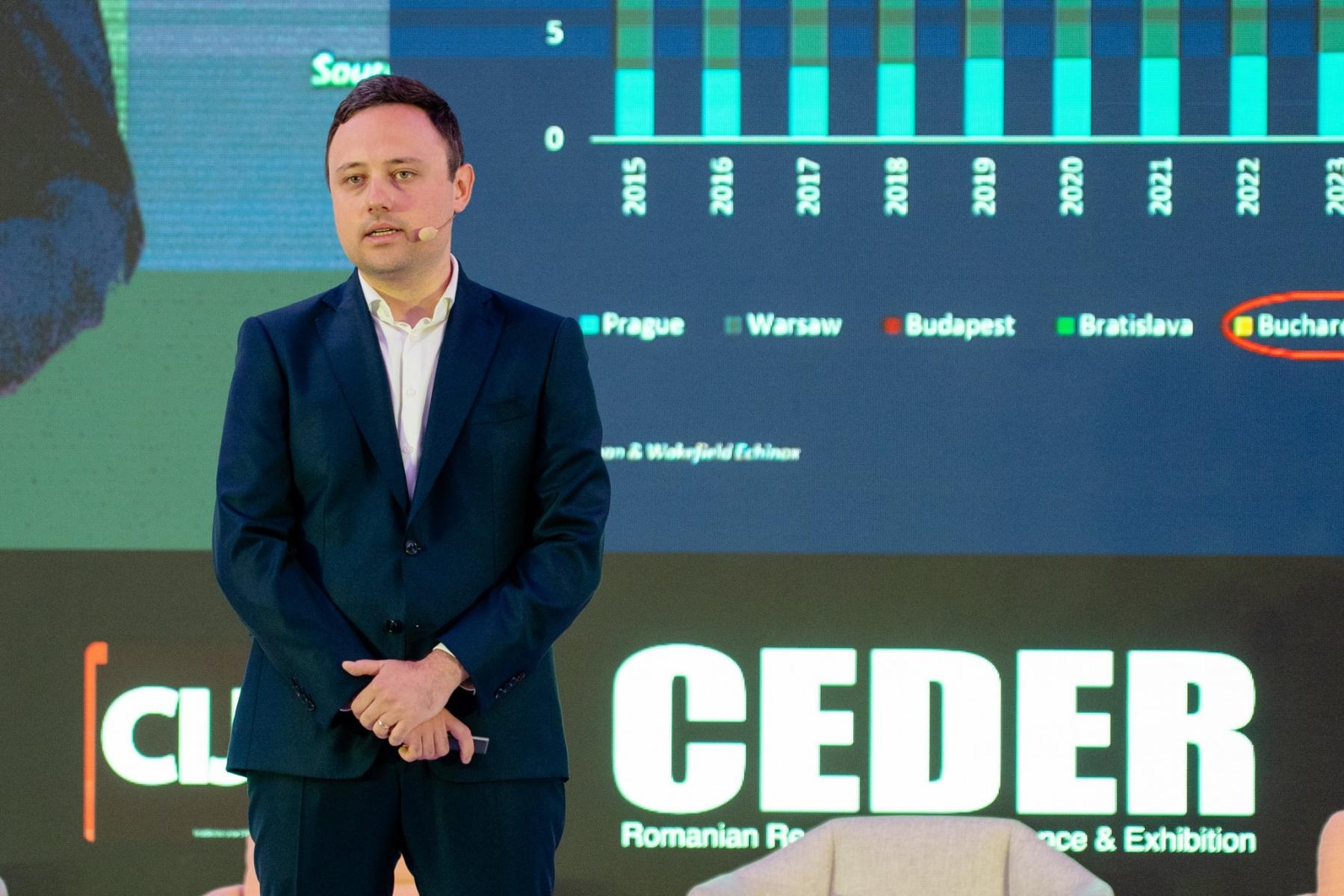CEDER 2025 in review: Growth, Infrastructure Hopes, and Real Estate Potential
The market presentation held by Cushman & Wakefield Echinox during CEDER 2025, featuring Vlad Săftoiu (Head of Research) and Cristi Moga (Head of Capital Markets), outlined Romania's significant economic developments and future potential. The presentation, structured around four pillars and focusing on five-year periods, highlighted positive trends across macroeconomics, infrastructure, finance, and the real estate market.
Macroeconomic data illustrates substantial progress since Romania joined the EU. The GDP has grown from less than €100 billion in 2006 to €354 billion in 2024. The five years preceding the pandemic saw impressive growth, the highest in the region and among the highest in the EU. Despite recent global challenges (“black swans”) like the pandemic and war in Ukraine, Romania has performed well and is expected to continue on this positive path. Inflation is forecast to decrease. Average net income has surged, from around €250 per month in 2006 to almost €1100 last year, projected to exceed €1200 this year. By the end of the decade, the average wage could approach €1700-€1800 nationally, and exceed €2000 in Bucharest. This shift suggests Romania is becoming more of a “white-collar destination”.
Foreign investment has been strong, with over €5-10 billion entering the economy in the last 6-7 years. The Nokian factory in Oradea, a large Greenfield development, exemplifies this trend, although investment has slowed in the last two years.
A notable shift is seen in population trends: after over 30 years, Romania recorded a marginal increase in resident population in the last two years, with 25,000 people arriving for work, including Romanians returning and foreigners. While the birth rate remains low, the country maintains an educated labour force with over 100,000 graduates annually.
Significant infrastructure progress was highlighted. After years of limited development, over 200 kilometres of new highways were delivered last year. With over 700 kilometres currently under construction, the network could expand to nearly 2000 kilometres in the next five years. Air passenger traffic has also doubled over the last decade, leading to overcrowding at Henri Coandă International Airport, which plans a new terminal to double capacity by 2040.
Financially, Romania has access to substantial European funds, with around 85% of the 2021-2027 multi-annual exercise still to be absorbed, alongside funds from the National Resilience Programme. State aids of approximately €1 billion per year are also available. Romanian banks are described as very well-capitalised, with a clients' loans-to-deposits ratio of 63%, significantly lower than the EU average, indicating ample liquidity. Although the banking sector is considered underdeveloped relative to GDP compared to regional peers, non-performing loans are low at 2.5%, in line with CEE, suggesting Romanians and companies are good payers.
The real estate market in the CEE region saw investment volumes of around €9 billion last year, expected to exceed €10 billion from 2025 onwards, recovering from a dip in 2023. Romania's market typically sees around €1 billion in transactions. Yields are stabilising, though Romania still has a gap compared to countries like the Czech Republic or Poland. The industrial sector has been the best performer in the last decade, with Romania's stock quadrupling since 2014 to 7.8 million sqm. Despite this growth, density is low compared to peers, suggesting significant potential driven by consumption. Bucharest's office stock has doubled since 2012 and is the youngest in the region. While investments slowed due to hybrid work models, increasing metro usage indicates more employees are returning to offices. The retail sector is also set for growth, with a high pipeline of projects set to increase density from a currently low base compared to other CEE countries.











